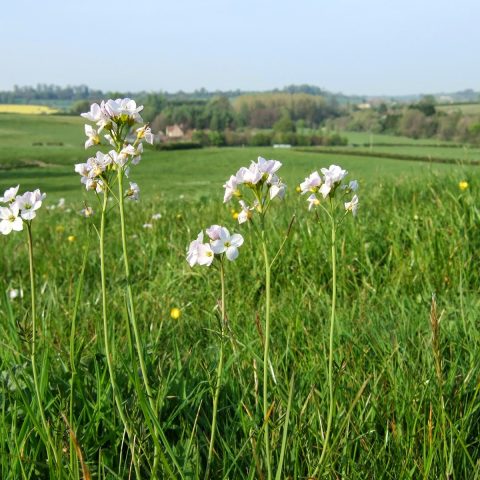NFC's Story
The National Forest Company (NFC) was set up as an Arms' Length Body of Defra to coordinate the creation of the National Forest, a new 200 square mile multi-purpose Forest in the Midlands, covering parts of Derbyshire, Leicestershire and Staffordshire. Since its inception in 1991, the National Forest has seen some 7,500 hectares (ha) of new forest creation, increasing forest cover across the area from an initial 6% to more than 21% today. With 9 million trees planted enhancing the landscape, economy and communities, the National Forest represents a story of successful forest creation for the nation.
The experience of the National Forest demonstrates that significant tree planting can be achieved in lowland England and can act as a source of inspiration for the scale of response needed to both mitigate and adapt to a changing climate. The NFC has embarked on a new 25-year vision for the National Forest to grow the forested landscape to one-third of the area and demonstrate climate change mitigation and adaptation in a real place.
The Nature for Climate project is stepping up the ambition and delivery across the National Forest, with increased funding from Defra and support from all sectors. More than 200 hectares of new forest habitat are now being created each year, doubling the previous levels and accelerating the move to more sustainable lifestyles. The project is very much a partnership, working with the public, private, voluntary and community sectors to increase delivery using grant schemes, land acquisition, planning gain and community initiatives.
The project is transformational, helping to shift to low-carbon practices as well as locking up carbon in trees, soils and habitats; supporting adaptation through shade, slowing water flow and soil protection, and enhancing well-being through increased access to green spaces for communities and visitors, as well as outdoor learning, practical management of woodlands and skills development.
Useful learnings from NFC
There are some general principles that have underpinned the success of the National Forest and can inspire the success of similar initiatives elsewhere.
Vision: Keeping the vision really simple and accessible will make buy-in easier and enable all parties to unite around a shared ambition.
Commitment: Forests and forested landscapes take years to develop, far longer than political time scales. So the commitment to landscape change needs to be embedded over the long term to enable planning and sustain investment.
Partnership: No one body can deliver large-scale landscape change. It is important to create a small coordinating body that supports existing partners to buy into the vision and deliver, and which can spread the load, responsibility and support.
Multi-functional benefits: Shaping a vision that is based on sustainable development can provide benefits for the environment, economy and communities. This can help to reduce conflict and does not polarise stakeholders e.g. between forestry and other land uses for farming or housing, around the protection of rare species and habitats, or in attitudes towards trees and woodland.
Government commitment and funding: Commitment by successive governments across party lines enables political buy-in. Reliable, long-term funding - albeit at a modest level- enables momentum to build and gives time for initiatives to deliver benefits.
Innovation and sustainability: Public funding should be used to drive change and to put the scheme on a sustainable financial footing. This will provide lasting impact in a way that simply subsidising public benefits cannot.
Strong local authority support: Strong political support at local level is essential and needs to be built into decision-making rather than simply vested in the current leadership. Supportive planning policies, signed up to by all authorities, can help the planning system to work with rather than against the creation of a forested landscape.
Strong community buy-in: Communities need to own an initiative if it is about changing their landscape. This means that tangible benefits must be available to everyone within a short period of time.
The area selected for the National Forest had distinct environmental, economic and social characteristics: a neglected landscape, industrial decline with the end of mineral extraction, the presence of economically and socially disadvantaged communities and a lack of clear local identity. These negative factors became arguments to embrace positive change at a strategic scale.
NFC's Metrics
Hectares of new forest habitat created providing a measure of tonnes of carbon sequestered.
Hectares of publicly accessible habitat created to improve health and wellbeing.
Hectares of woodlands brought into active management.
Hectares of new priority habitat created for wildlife.





